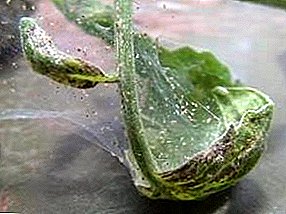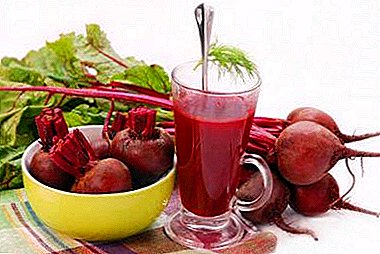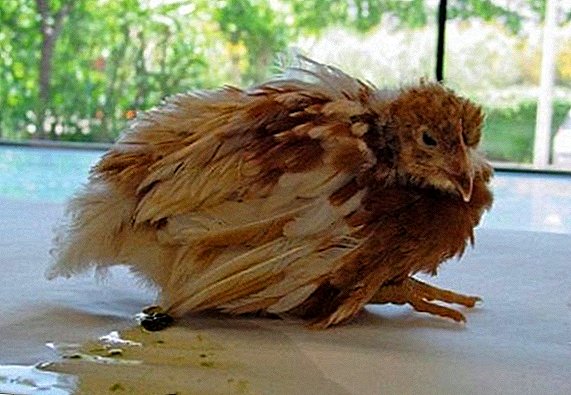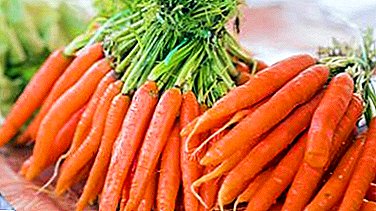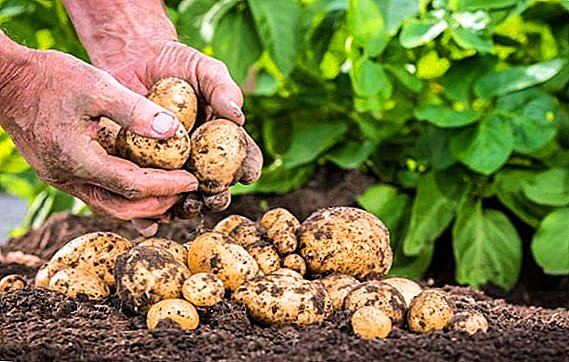 Potatoes are one of the most popular vegetables, and in order to harvest a large crop, you need to properly fertilize. In our article we will tell you what kind of fertilizer for potatoes is better to use during planting and during the care of the plant.
Potatoes are one of the most popular vegetables, and in order to harvest a large crop, you need to properly fertilize. In our article we will tell you what kind of fertilizer for potatoes is better to use during planting and during the care of the plant.
Why fertilize potatoes
Potatoes, unlike other crops, need many nutrients. This is due to the poor development of the roots and the large size of the tubers. Along with the harvest, we take some useful elements from the soil, therefore it is important, planting potatoes for the next year, to bring in the nutrients it needs for normal development and growth. Lack of fertilizer will gradually lead to a decrease in yield, the tubers will become small.
Familiarize yourself with the cultivation of such varieties of potatoes: "Kiwi", "Gala", "Luck", "Irbitsky", "Rosara", "Queen Anna", "Blue".

Important! It is not necessary to plant potatoes every season on the same plot - with such a scheme, pests and diseases will increasingly attack the plant, which will lead to a decrease in yield.To get a full-fledged harvest, it is necessary to ensure the supply of useful substances in such a volume: in order to get 4 kg of potatoes from 1 square meter, the soil should contain 20 g of nitrogen, 40 g of potassium oxide, 5 g of magnesium and 10 g of phosphorus acid. A small amount of copper, zinc and manganese should also be present. It will not be possible to fertilize the plant at once with all minerals, since they are necessary for potatoes at different stages of growth.
Types of fertilizer for potatoes
Each type of plant responds better or worse to the same fertilizer. If you want to achieve positive results of your labors and collect a good harvest, you should understand which dressings are more suitable for potatoes.
The highest cultivation efficiency is achieved using:
- organic fertilizers (compost and manure). Organic contains elements that are necessary for the normal development of the plant. Decomposing, such fertilizers contribute to an increase in carbon dioxide in the aerial layer of the air, with the result that the tubers grow large and healthy;
- chicken litter. Chicken dung as a fertilizer for potatoes is popular due to its high concentration and rapid effects on plant growth. It is forbidden to use undiluted. Before use, litter is diluted with water 1 to 15 and placed in a warm place for 2-3 days. Water 1 liter per bush;
- ash. Contains the substances necessary for healthy growth of tubers. For each weave contribute up to 10 kg. Ash as a fertilizer for potatoes is often used by gardeners, as it contributes to obtaining high-quality large yield;
- urea. It contains the required amount of nitrogen to the potato, contributing to an increase in yield, but it is worth carefully observing the dosage;
- ammonium nitrate. It has the same effect as urea;
- bone meal.






- nitrofoski;
- Chemirs
Did you know? Potatoes are tubers, very toxic. After eating 2-3 raw potatoes, you can get a serious poisoning.Some believe that if you use all the fertilizers little by little, the benefits of this will be greater. In fact, it is necessary to feed in accordance with certain rules at different stages of potato growth.
When and how to fertilize
It is very important to adhere to the timing of fertilization, if you want to get a rich harvest. Consider when and how best to perform these activities.
Autumn plot preparation
To get a rich harvest, you need to take care of the soil in the plot prepared for potatoes. With each season, it loses nutrients, so in the autumn time you should definitely fertilize it.
Ideally, it is recommended to combine mineral fertilizers and organic matter. At 1 square meter of soil must be left 5-7 buckets of manure. At the same time it is necessary to carry out mineral supplements. For this, superphosphate is added (30 g per 1 square meter), it is also recommended to add potassium sulfate and phosphorus - 15 g per 1 square meter. 
Important! Plant only high-quality seed: there should be no stains, growths and damage on the tubers. Otherwise they may not germinate at all.You can do using only agrochemicals. Most often they are used in areas whose land is infected with pests or has pathogenic microflora. Effective is the use of double superphosphate and potassium sulfate (1: 2 ratio). Potash fertilizers for potatoes are very important, so they need more.
After the tops have been removed from the potato field, you can land the siderats on it. Perfect for this mustard white. For three weeks, it forms the necessary mass, and with the arrival of spring, it will be necessary to dig the ground along with the mustard.
When preparing the site in the autumn, you can perform a deep digging. If you plan to use the walker, you will need 2 times to process the area on clay soil and one - on sandy. When digging by hand, you need to dig a spade to the full depth of the bayonet.  In the presence of acidic soil in the autumn, its restoration is carried out. To do this, you should fertilize it with dolomite flour, lime or ash (200 g per 1 sq. M). If the site appears sorrel or moss - this means that the pH of the soil has changed.
In the presence of acidic soil in the autumn, its restoration is carried out. To do this, you should fertilize it with dolomite flour, lime or ash (200 g per 1 sq. M). If the site appears sorrel or moss - this means that the pH of the soil has changed.
Fertilizer when planting
You can achieve greater benefits if you apply fertilizer to each bush individually. If the decision is made to feed the plant with organic matter, it is necessary to pour a 700-gram jar of dry humus and 5 tablespoons of ash into each hole.  If you use agrochemicals, it is worth putting 1 tbsp into each hole. spoon Nitrofoski and 100 g of bone meal.
If you use agrochemicals, it is worth putting 1 tbsp into each hole. spoon Nitrofoski and 100 g of bone meal.
Root top dressing
Plant root fertilizer is best done before the hilling of the bushes is completed. Before that, it is necessary to loosen the soil slightly so that the nutrients can be easier to get to the roots. After feeding it is worth performing abundant watering.
Did you know? There is a potato whose flesh is colored blue. The most common varieties of this type can be called "Linzer blaue".Among the most common dressings are the following:
- Top dressing bird droppings. To prepare, it is necessary to dilute in water in proportions of 1 to 10, then pour the furrows between the rows.
- Top dressing with urea. 10 liters of water mixed with 1 tbsp. with a spoon of urea, after which the bushes are watered near the root with this solution, after performing a slight loosening. Under one bush is to make half a liter of suspension.
- Feeding with mullein. Dissolve 1 liter of fresh manure in 10 liters of water, ferment the mixture and pour the soil between the rows.
- Top dressing herbal infusion. To prepare the infusion, you can use any type of weeds. They should be soaked in a barrel of water, then wait for the mixture to ferment, dilute to a light brown color and water the plants in the evening around the perimeter of the fossa. Try to keep the liquid from falling on the stalks. June is best suited for such dressing - at this time the plants need nitrogen.
- Top dressing by mineral fertilizers. Mineral fertilizers for potatoes are recommended to be made in the spring. Often use ammonium nitrate, dissolving it in water (20 g per 10 liters of water). You can mix nitrogen, phosphate and potash fertilizers (proportion 1: 1: 2), and then dissolve this mixture in 10 liters of water.

Foliar feedings
A great way to fertilize, which allows you to bring all the missing nutrients to plants, is foliar feeding of potatoes. It is recommended to hold this event after weeding the site, in the evening, to protect the plant from getting burns. This method favors the rapid penetration of fertilizers into the plant, which allows to intensify metabolic processes and increase the growth and development of roots, increases the amount of the crop. We suggest to get acquainted with the most common foliar dressing:
- carbamide. The following dosages are safe: water - 5 l, urea - 100 g, potassium monophosphate - 150 g, boric acid - 6 g. In addition, a little boron, copper, manganese, zinc and cobalt are sometimes added to the mixture (1 g per 10 liters ). The first time feeding is carried out 10 days after the first shoots appear. The working solution must be diluted twice. Then feeding can be done with the same composition, but not spreading it. Be sure to respect the interval of 14 days. Processing should be carried out until the potatoes start to bloom;
Important! During the storage period of potatoes, be sure to ensure the optimum air temperature - just above 0 ° C. In this mode, you can protect the crop from fungal diseases.
- phosphoric. It is held at the end of the flowering period, about 3-4 weeks before harvest. Used infusion of superphosphate (100 g per 10 liters of water for spraying 10 square meters.). Phosphorus, which penetrates the tops of the plant, will help increase yields and saturate tubers with starch;
- humates It is possible to start feeding with humates immediately, as the fourth leaf appears on the plant. The period between treatments should not be less than 2 weeks. Quite common is "Gumat + 7". To prepare the solution, it is necessary to dilute 2 g in 10 l of water. For every weave you need to make 3 liters;
- nettle infusion. Infusion contains all the necessary substances for potatoes. To cook it, you need to pour the stalks of nettle with water and insist in heat before fermentation. After the solution must be drained, dilute and process the area. Between the procedures should take at least 10 days.
Did you know? Potatoes are the first vegetable to be grown in space. This event dates back to 1995.
 Regardless of what type of fertilizer you choose, you need to feed during the prescribed periods. Properly using fertilizers, you can achieve a rich and tasty harvest.
Regardless of what type of fertilizer you choose, you need to feed during the prescribed periods. Properly using fertilizers, you can achieve a rich and tasty harvest.


